Having spent over three years in New Delhi, it’s surprising it took us this long to write about this fascinating city. Often overlooked by tourists from Western countries, New Delhi is a treasure trove of experiences, rich with vibrant culture and history. It’s a city where every corner offers something unique, from bustling markets to serene temples. This post aims to shed light on the many things to do and what attractions you shouldn’t miss in New Delhi, showcasing why this city should be on every traveler’s list.
Whether it’s exploring the historical New Delhi attractions or immersing oneself in the local lifestyle, there’s an endless array of experiences waiting. Join us as we delve into the heart of New Delhi, a city that’s as enigmatic as it is exhilarating.

1. Explore the Iconic Taj Mahal

Journey to the Taj Mahal: An Unmissable Excursion from New Delhi
As you plan your itinerary for Delhi, one essential thing to see is the Taj Mahal. While the Taj Mahal isn’t located in New Delhi, it’s an essential visit when you’re in the vicinity. Known as one of the New 7 Wonders of the World, this iconic lies in Agra, just a three-hour drive away from the capital. Travel options vary, including train and bus, but for a blend of comfort and freedom, consider hiring an Uber driver for the day. Though it costs around 100€, the convenience and flexibility it offers make it a value-for-money choice.
The Taj Mahal stands as a proud UNESCO World Heritage Site and is India’s most recognized monument. It is no coincidence that it attracts over 7 million visitors annually. Built by Mughal Emperor Shah Jehan in 1648, this architectural masterpiece serves as a memorial to his beloved wife. The primary material used is marble, and the mausoleum is the final resting place for the royal couple.
The Architectural Marvel of the Taj Mahal
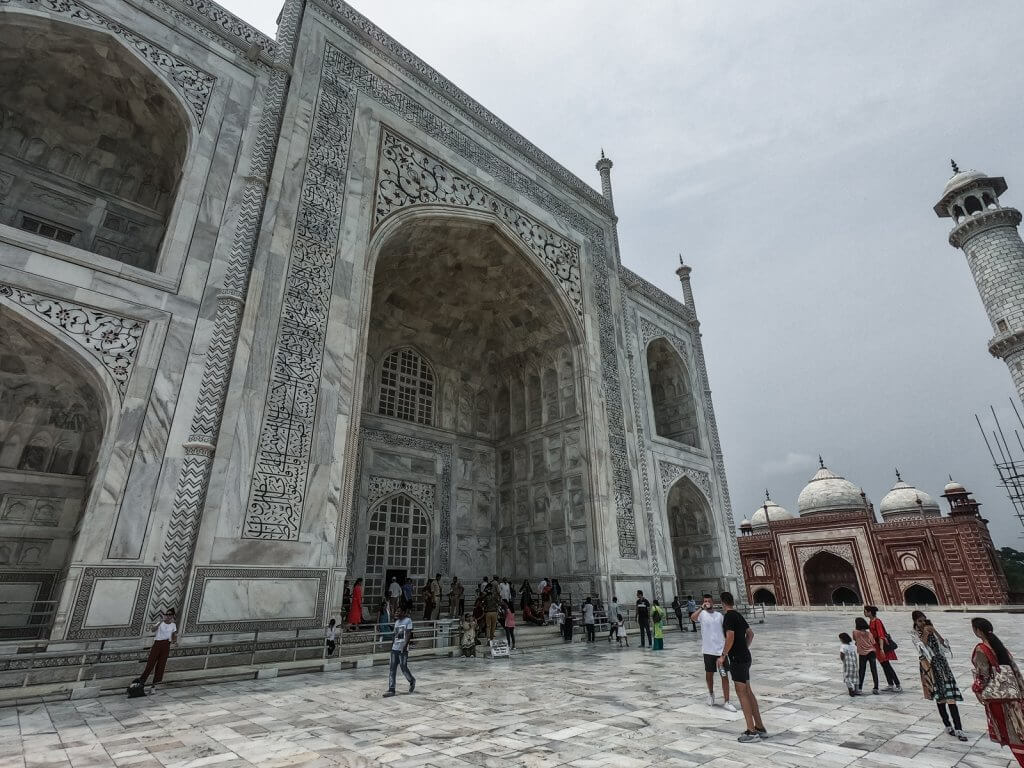
The construction of the Taj Mahal was a monumental task, involving over twenty thousand workers and one thousand elephants for transporting materials. This magnificent structure represents Shah Jehan’s vision of his wife Mumtaz Mahal’s home in paradise. It combines elements of Islamic, Indian, Persian, Ottoman, and Turkish art, beautifully decorated with floral motifs and calligraphy.
A unique feature of the Taj Mahal is its ever-changing marble colors! They appear pinkish in the morning, milky white at noon, and golden at sunset. Our photo credits go to Caras Andrei for capturing these stunning views.
Visitors enter the Taj Mahal complex through an avenue lined with shops leading to the eastern entrance gate and security checkpoint. We recommend using the eastern entrance, as it passes through the Great Gate (Darwaza-Rauza), an impressive example of Islamic architecture. This gate provides a breathtaking first glimpse of the Taj Mahal, perfectly framed in its red-colored archway.
2. Garden of Five Senses: A Serene Escape in Delhi
If you’re looking for a relaxing activity in Delhi, a great thing to see is the Garden of Five Senses! It stands out as a unique oasis in between the bustling cityscape. A place specifically designed to engage and invigorate all your senses. As you wander through the gardens, you’ll find it takes about 1-2 hours to fully discover its various thematic areas. Each section of the park is meticulously crafted, offering a sensory experience that blends natural beauty with artistic elements. It’s a must-visit spot on your list of New Delhi attractions, perfect for those seeking a tranquil retreat.
Adding to its charm is a striking feature that symbolizes the warm relationship between India and Mexico – a replica of the Mayan Labná Arch. This architectural marvel not only enhances the park’s aesthetic but also serves as a testament to cultural exchange and international friendship.
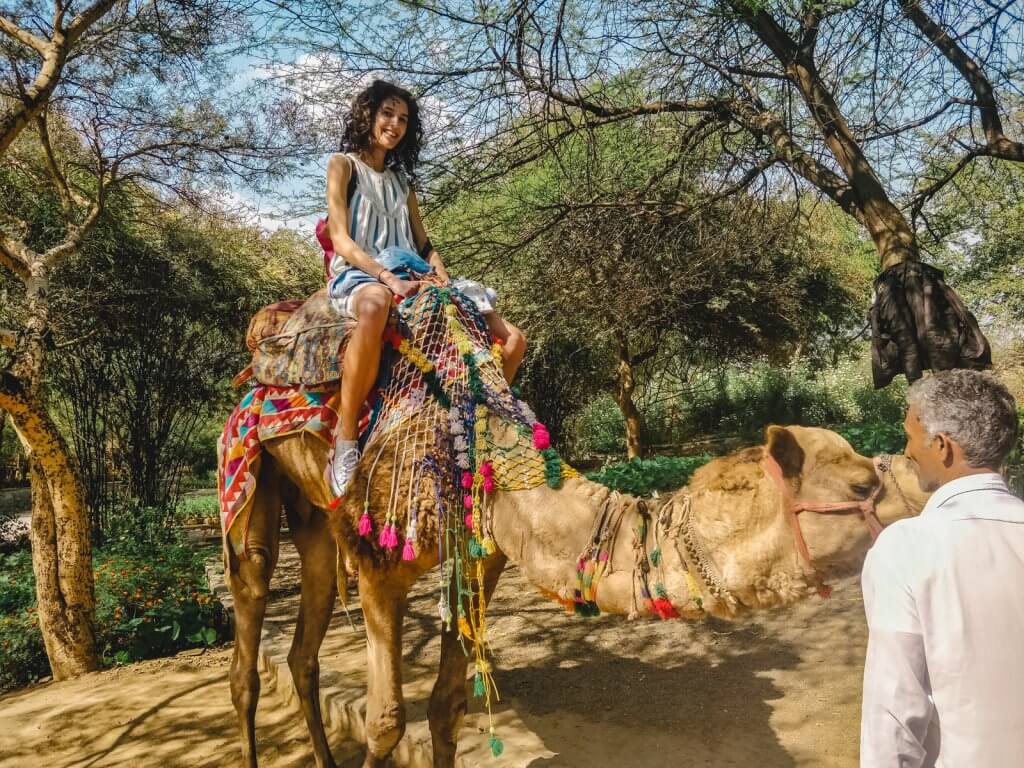
Click here for directions to Garden of Five Senses
3. India’s Gate: A Testament to History
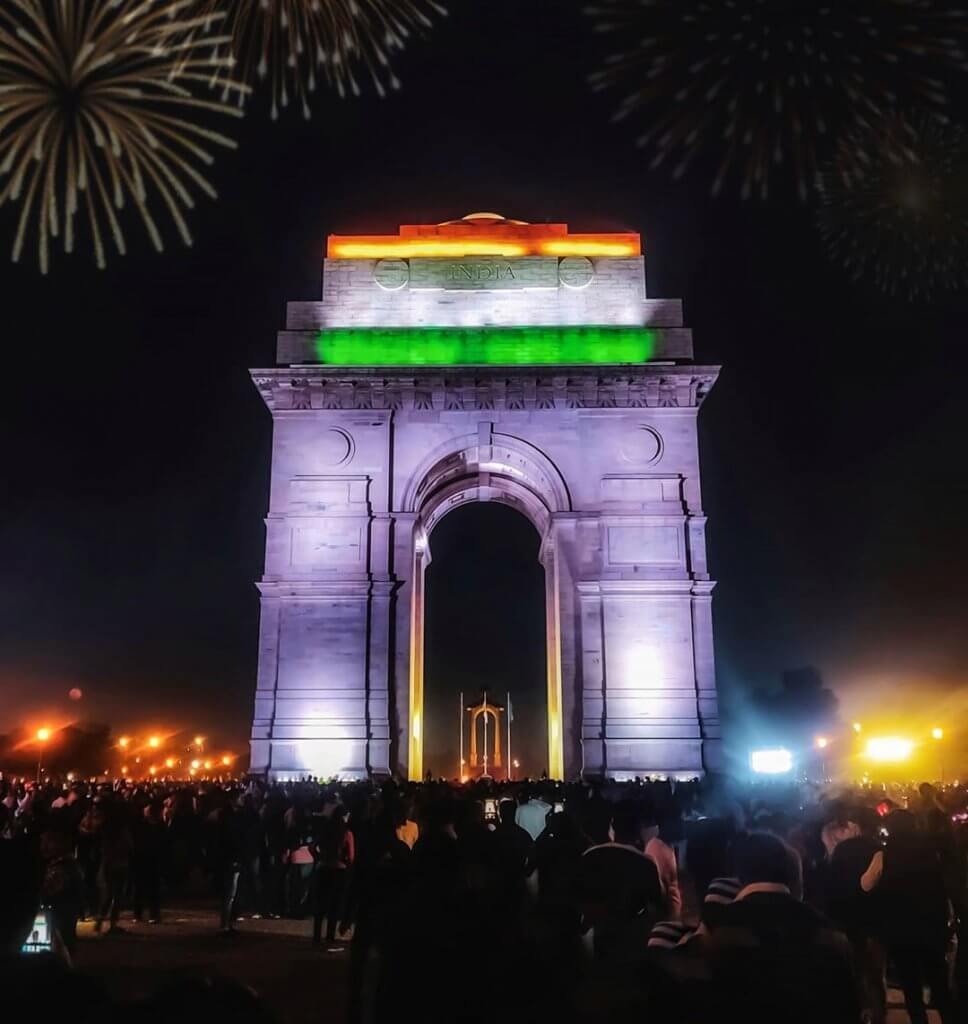
India Gate, an imposing 42-meter high archway designed by Sir Edwin Lutyens stands as a solemn tribute to the 80,000 soldiers who perished in World War I. This majestic monument, etched with the names of approximately 13,300 servicemen who fell in battle, is not just an architectural marvel but also a poignant reminder of the sacrifices made for freedom. As a key highlight among New Delhi attractions, it draws visitors from all corners, inviting them to reflect on history’s significant moments.
If your visit to New Delhi coincides with the 26th of January, you’re in for a special treat. On this day, India Gate becomes the backdrop for a spectacular parade, a vibrant display of India’s rich cultural and military heritage. This event is a must thing to see for anyone exploring Delhi, offering a unique glimpse into the nation’s patriotic spirit and cultural diversity. Standing in front of India Gate, especially during this grand celebration, you’ll feel a deep connection to the heart and soul of India, making it an unforgettable part of your New Delhi journey.
4. Uncover Treasures at Sarojini Nagar Market
Sarojini Nagar Market is the most famous market in Delhi and India. You will find there everything that you may look for. Everything is available here. Western wear, Indian wear, shoes, belts leather products, and so on in amazing low price.
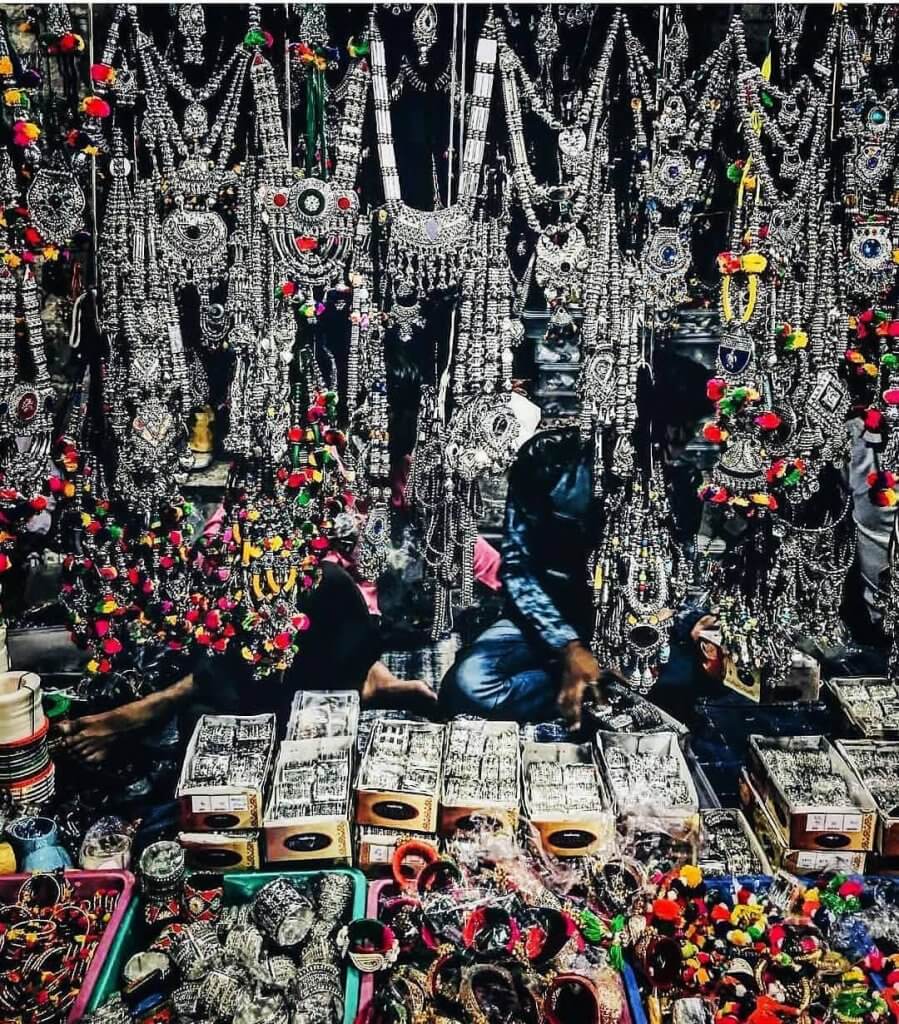
A shirt for 100 (2$) rupees or a pair of jeans for 300 rupees is normal there. As mentioned in our post for Goa you can always bargain on those prices!
Cheap clothes here don’t always mean they’re counterfeit. While some may be factory rejects, many are well-made, affordable garments for those who can’t pay ‘regular’ prices, a necessity in a country like India with widespread economic disparities.
5. Hauz Khas Village and Fort: Blending History with Trendy Vibes
Hauz Khas Village, a hub for Delhi’s vibrant nightlife, attracts scores of young people looking to party. Beyond its lively evenings, the area boasts quaint coffee shops, designer stores, and restaurants. For those seeking high-quality clothes and home décor at reasonable prices, Hauz Khas Village is the ideal destination.
The Hauz Khas Fort, dating back to the 13th and 14th centuries, is an unmissable sight. It’s a favorite spot for relaxation, leisurely walks, and photoshoots.
Kunzum Travel Café is another gem in the area, frequented by travelers from across the globe. It’s more than just a coffee spot; it’s a meeting point for sharing stories and experiences. The café embodies the spirit of travel and serves as a microcosm of global culture. Its unique concept could easily inspire a worldwide franchise.
6. Red Fort (LAL QILA): A Symbol of New Delhi’s Heritage
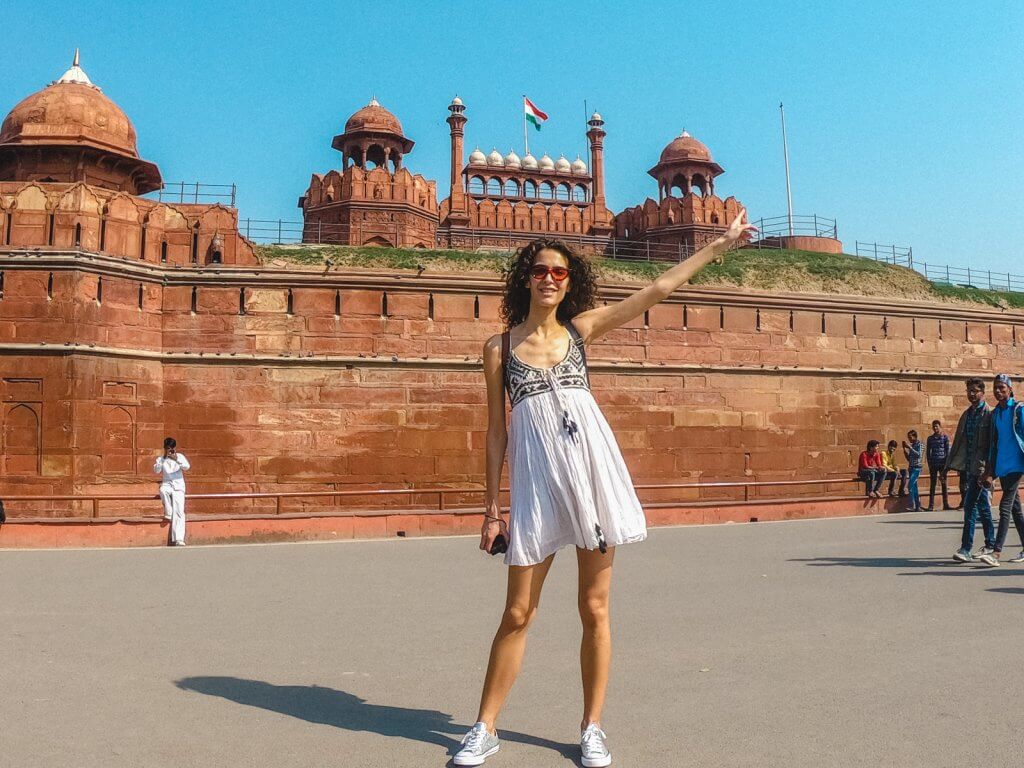
The Red Fort, also known as LAL QILA, stands majestically in Old Delhi, adjacent to the Yamuna River and Salimgarh. This massive red fortress was a creation of Emperor Shah Jahan. The same visionary behind the Taj Mahal—marks his shift from Agra to Delhi. Among the world’s architectural marvels, there are only two Red Forts. One in Delhi and one in Agra, both Shah Jahan’s masterpieces.
Despite its current red facade, the Red Fort’s original color was white, as per the Archaeological Survey of India. Constructed from limestone, its white hue faded over time. The British later chose to repaint it in red. This transformation adds a unique chapter to the fort’s history, making it a pivotal New Delhi attraction. The Red Fort’s rich past and architectural grandeur make it a must-see attraction for anyone interested in Delhi’s heritage.
The Story of the Kohinoor Diamond
The story of the Kohinoor Diamond, which was once an integral part of the throne at the Red Fort, is a fascinating chapter in the fort’s history. This legendary diamond, renowned for its size and beauty, has a tumultuous past, marked by conquests and transfers of power. During the British colonization of India, the Kohinoor Diamond was taken to England as a part of the colonial spoils. Its journey didn’t end there. It eventually became a part of the British Crown Jewels, currently adorning the crown of the Queen of England.
This diamond’s journey from the Red Fort to the British crown is a reflection of historical shifts in power and wealth. The Kohinoor’s story is a poignant reminder of the rich and complex history that the Red Fort has witnessed over the centuries, encapsulating both the glory and the turbulence of India’s past. Today, the absence of the Kohinoor Diamond in the Red Fort is a silent testament to the historical exchanges between nations and the changing tides of fortune and rule.
7. Lotus Temple: An Architectural Marvel in Delhi

The Lotus Temple is a stunning architectural marvel attraction in Kalkaji, New Delhi. It stands as a symbol of peace, purity, love, and immortality. Dedicated to the Bahai faith, founded by Baha-ullah, a Persian nobleman from Tehran, it draws visitors from all faiths.
Fariborz Sahba, the Persian architect behind this masterpiece, presented his design in a remarkable way. He showcased a lotus flower floating in water alongside a cardboard model, emphasizing the concept. The choice of a lotus for the temple’s design reflects its welcoming nature, as it’s a place of unity and tranquility for people of all religions.
The structure of the Lotus Temple is eye-catching, with 27 freestanding petals made of concrete and adorned with Greek marble. The same was used for the Parthenon and Kalimarmaro stadium. The tallest petal reaches a height of 35 meters, creating an awe-inspiring sight.
8. Spiritual Serenity at Akshardham Temple
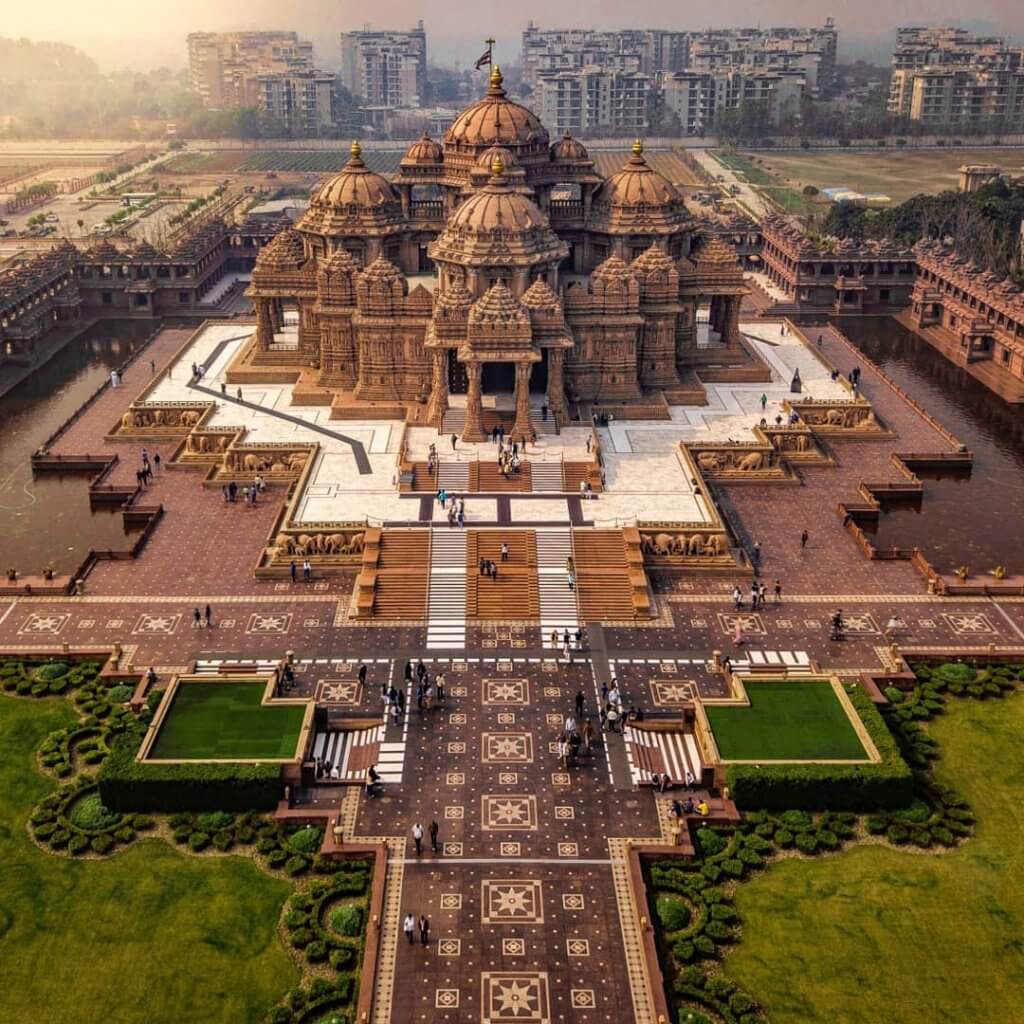
When you visit New Delhi, don’t miss out on the Akshardham Temple undoubtedly one of the most iconic things to see. A truly remarkable sight both in terms of architecture and scale. This magnificent temple often draws comparisons with the Taj Mahal, with many visitors finding it just as impressive, if not more so, than its famed counterpart in Agra.
The intricate details in the stone and marble work are sure to captivate you, and the stunning light show, along with massive 3D projections, adds to its allure.
Please note, that as a measure to preserve the sanctity and experience, all electronic devices must be switched off before entering the temple. This policy means we couldn’t capture photos to share with you here. But this also gives you a unique chance to fully immerse yourself in the beauty of Akshardham without distractions.
9. Qutb Complex and Qutb Minar: Exploring Ancient Ruins

On the Qutb Complex in Delhi, a remarkable UNESCO World Heritage Site, one of the most exciting things to see is the blend of architectural styles and historical narratives. Within the complex, visitors can admire a unique coexistence of Hindu temples and a mosque, which is believed to have been originally a Hindu structure. This blend of cultural elements makes the site a compelling visit.
Standing tall as the centerpiece of the Qutb Complex is the Qutub Minar, the world’s tallest minaret, soaring over 60 meters high. The origins and initial purpose of the Qutub Minar and the complex at large are subjects of intense debate and controversy. There are intriguing questions challenging current theories, such as the unusual north-facing orientation of the minaret’s door, typically expected to face east, and the presence of Hindu temples surrounding the minaret.
Despite these historical mysteries, the undeniable fact remains: the architectural grandeur of the entire structure is breathtaking. While we may not be able to accurately attribute its creation to specific individuals or groups, the beauty and magnificence of the Qutb Complex are undeniable. Its awe-inspiring architecture captivates all who visit, leaving a lasting impression of the rich and complex tapestry of India’s history.
10. Savour Delhi’s Flavours: A Guided Food Walking Tour
Embracing the culinary delights of Delhi is an adventure in itself, as we’ve highlighted in our previous posts about India. Dining in restaurants is undoubtedly safe, but the true essence of Indian cuisine comes alive when you experience it like a local. Moreover one of the most flavorful things to see in Delhi is the bustling spice markets, where the vibrant colors and aromas of exotic spices offer a feast for the senses. Known for its rich spices, Indian food has left its mark globally, influencing culinary traditions worldwide.
To dive into this gastronomic journey, we turned to Get Your Guide, which offered a plethora of options for guided food walking tours. We’re excited to share these experiences with you! These tours not only promise a taste of authentic local specialties but also provide an insight into the cultural fabric of Delhi. It’s an opportunity not just to eat but to learn about the history and stories behind each dish. This exploration of Delhi’s flavours is more than just a meal; it’s a journey through the heart of Indian cuisine.

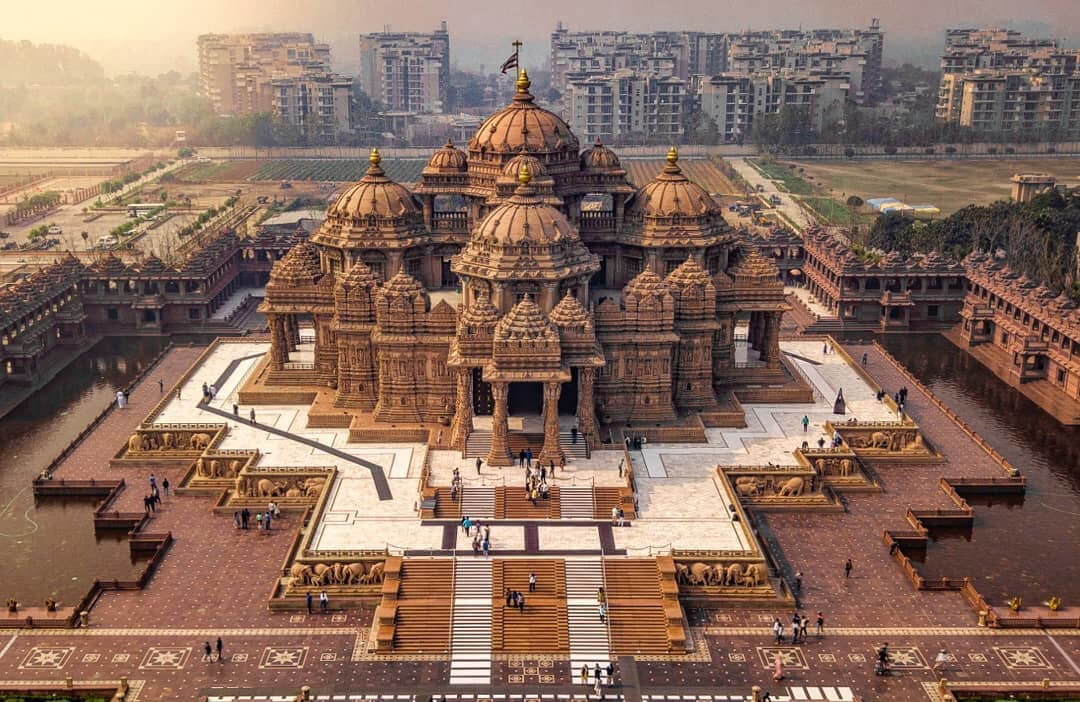



Leave a reply